Refer to the exhibit, which shows the partial output of a real-time OSPF debug.
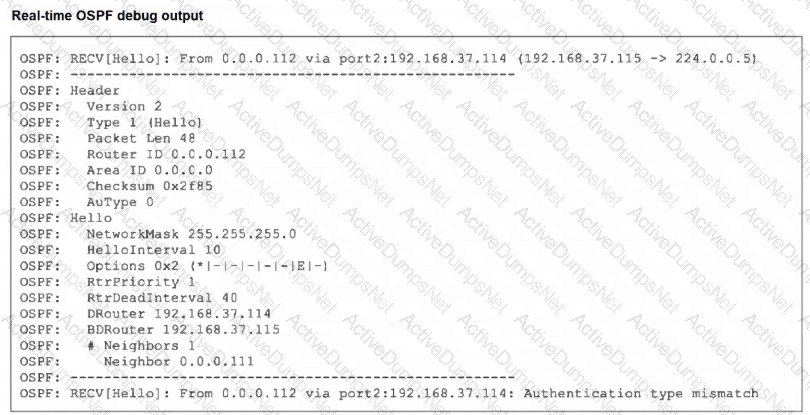
Why are the two FortiGate devices unable to form an adjacency?
Exhibit.
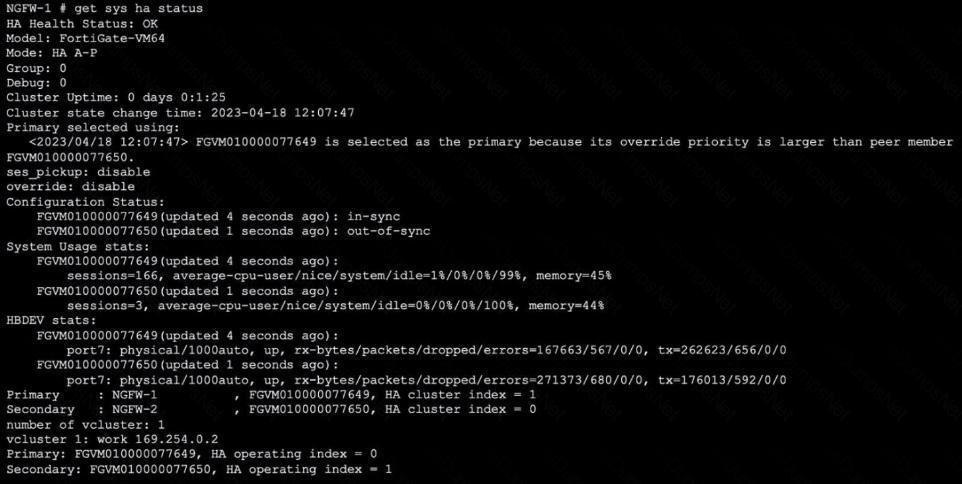
Refer to the exhibit, which shows the output of get system ha status.
NGFW-1 and NGFW-2 have been up for a week.
Which two statements about the output are true? (Choose two.)
Which statement about parallel path processing is correct (PPP)?
Exhibit.
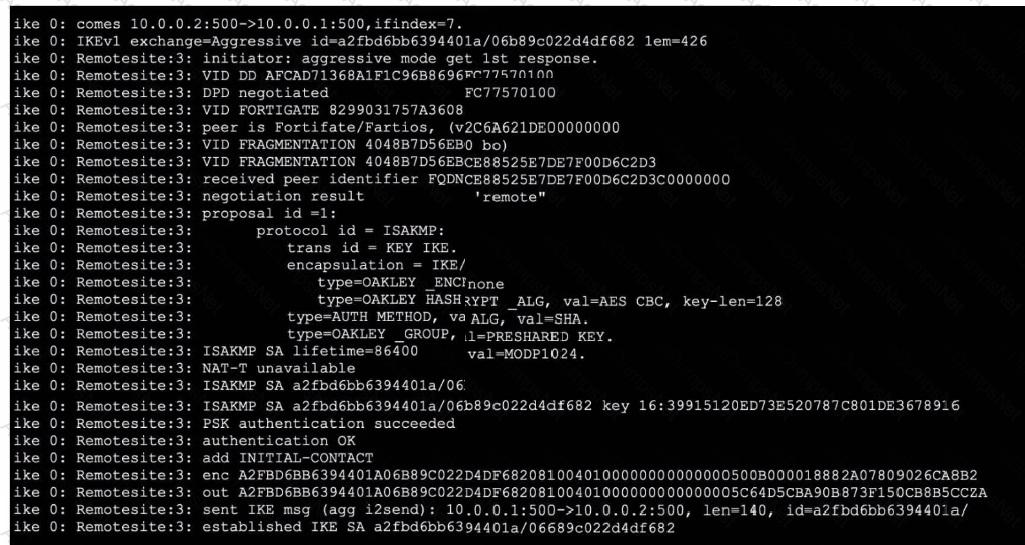
Refer to the exhibit, which contains partial output from an IKE real-time debug.
Which two statements about this debug output are correct? (Choose two.)
Refer to the exhibit.
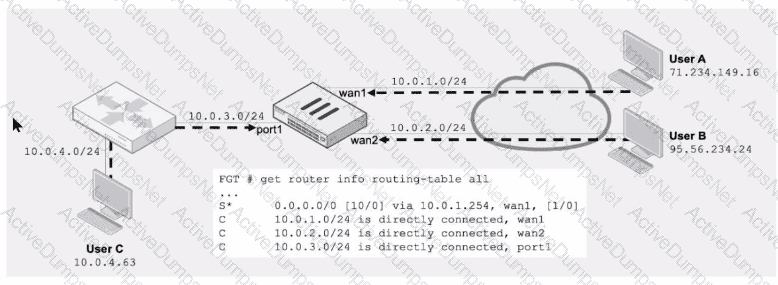
Assuming a default configuration, which three statements are true? (Choose three.)
Exhibit 1.
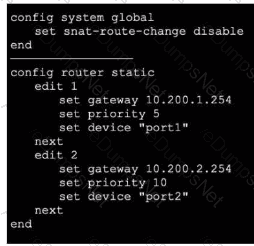
Exhibit 2.
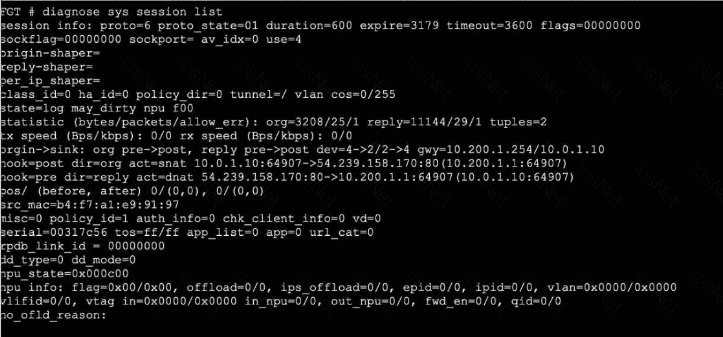
Refer to the exhibits, which show the configuration on FortiGate and partial internet session information from a user on the internal network.
An administrator would like to lest session failover between the two service provider connections.
Which two changes must the administrator make to force this existing session to immediately start using the other interface? (Choose two.)
Exhibit.

Refer to the exhibit, which shows two entries that were generated in the FSSO collector agent logs.
What three conclusions can you draw from these log entries? {Choose three.)
Consider the scenario where the server name indication (SNI) does not match either the common name (CN) or any of the subject alternative names (SAN) in the server certificate.
Which action will FortiGate take when using the default settings for SSL certificate inspection?
Refer to the exhibit, which shows a partial output of the fssod daemon real-time debug command.

What two conclusions can you draw Itom the output? (Choose two.)
Exhibit.
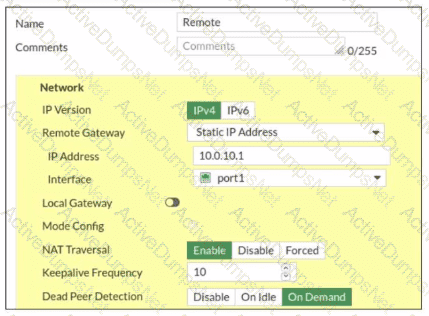
Refer to the exhibit, which contains a screenshot of some phase 1 settings.
The VPN is not up. To diagnose the issue, the administrator enters the following CLI commands on an SSH session on FortiGate:

However, the IKE real-time debug does not show any output. Why?
Which statement about protocol options is true?
Refer to the exhibit.
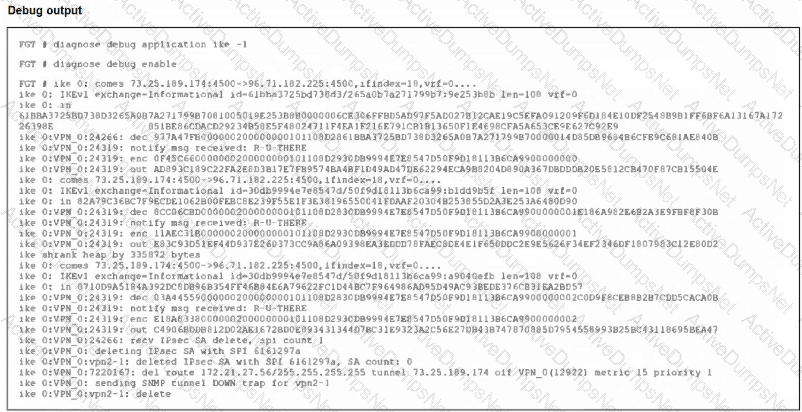
An IPsec VPN tunnel is dropping, as shown by the debug output.
Analyzing the debug output, what could be causing the tunnel to go down?
Refer to the exhibit, which shows the output of a policy route table entry.

Which type of policy route does the output show?
Refer to the exhibit, which shows the partial output of FortiOS kernel slabs.

Which statement is true?
Refer to the exhibit, which shows a truncated output of a real-time LDAP debug.

What two conclusions can you draw from the output? (Choose two.)
Which exchange lakes care of DoS protection in IKEv2?
Which authentication option can you not configure under config user radius on FortiOS?
Exhibit.

Refer to the exhibit, which shows the output of a diagnose command.
What can you conclude about the debug output in this scenario?
Refer to the exhibit, which shows one way communication of the downstream FortiGate with the upstream FortiGate within a Security Fabric.

What three actions must you take to ensure successful communication? (Choose three.)